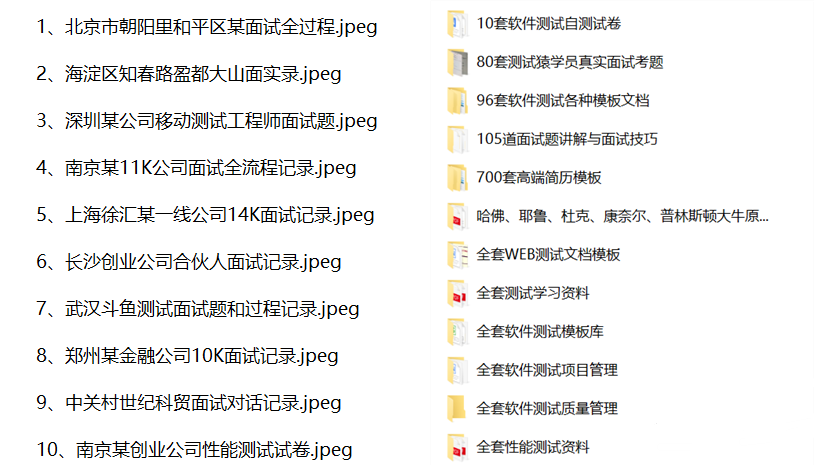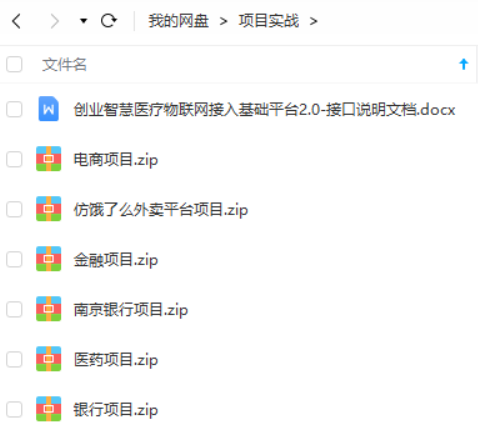- 1综合评价指标权重方法汇总
- 2程序员转正述职报告/总结_员工述职表 前端开发工作不足怎么写
- 3Qt 三维柱状图 Q3DBar 和 三维条形图中的数据序列 QBar3DSeries_q3dbars 重
- 4git使用命令拉取、推送代码_git拉取代码并推送本地
- 5数独问题的解决办法_数独是一个我们都非常熟悉的经典游戏,运用计算机我们可以很快地解开数独难题,现在
- 6【Hadoop】分布式文件系统 HDFS_基于hadoop的分布式文件系统hdfs
- 72020.3 IDEA Gitee提交_idea git 提交gitee文件如何判断是否提交
- 8sanic + A-Frame / Three.js 构建虚拟现实VR场景_three.js虚拟场景
- 9动态规划题目汇总(持续更新)_动态规划算法题目
- 10用python计算圆周率
AI写测试用例_ai自动写单元测试
赞
踩
2024软件测试面试刷题,这个小程序(永久刷题),靠它快速找到工作了!(刷题APP的天花板)_软件测试刷题小程序-CSDN博客文章浏览阅读2.5k次,点赞85次,收藏11次。你知不知道有这么一个软件测试面试的刷题小程序。里面包含了面试常问的软件测试基础题,web自动化测试、app自动化测试、接口测试、性能测试、自动化测试、安全测试及一些常问到的人力资源题目。最主要的是他还收集了像阿里、华为这样的大厂面试真题,还有互动交流板块……_软件测试刷题小程序 https://blog.csdn.net/AI_Green/article/details/134931243?spm=1001.2014.3001.5502一、用ChatGPT直接生成的测试用例
https://blog.csdn.net/AI_Green/article/details/134931243?spm=1001.2014.3001.5502一、用ChatGPT直接生成的测试用例
要写测试,我们要先有一个程序。为了避免这个题目本身就在AI的训练数据集里面,它直接知道答案。
我们用一个有意思的小题目,也就是让Python根据我们输入的一个整数代表的天数,格式化成一段自然语言描述的时间。条件定义:1个星期是7天,1个月是30天,1年是365天。比如,输入1就返回1d,输入8就返回1w1d,输入32就返回1m2d,输入375就返回1y1w3d。
需求:
- 用Python写一个函数,进行时间格式化输出,条件定义为1个星期是7天,1个月是30天,1年是365天。比如:
- 输入 输出
- 1 1d
- 8 1w1d
- 61 2m1d
- 375 1y1w3d
- 要求仅需要格式化到年(?y?m?w?d),即可
我们直接让ChatGPT把程序写好如下:

既然ChatGPT可以写代码,自然也可以让它帮我们把单元测试也写好,如下:


这个测试用例覆盖的场景其实已经很全面了,既包含了基本的功能验证测试用例,也包含了一些异常的测试用例。
二、基于Openai接口进行过程验证
2.1、分解步骤写Prompts
OpenAI的示例给出了很好的思路,那就是把问题拆分成多个步骤。
- 把代码交给大语言模型,让大语言模型解释一下,这个代码是在干什么。
- 把代码和代码的解释一起交给大语言模型,让大语言模型规划一下,针对这个代码逻辑,我们到底要写哪几个TestCase。如果数量太少,可以重复让AI多生成几个TestCase。
- 针对TestCase的详细描述,再提交给大语言模型,让它根据这些描述生成具体的测试代码。对于生成的代码,我们还要进行一次语法检查,如果语法检查都没法通过,我们就让AI重新再生成一下。
2.2、请AI解释要测试的代码
- import openai
-
-
- def gpt35(prompt, model="text-davinci-002", temperature=0.4, max_tokens=1000,
- top_p=1, stop=["\n\n", "\n\t\n", "\n \n"]):
- response = openai.Completion.create(
- model=model,
- prompt=prompt,
- temperature=temperature,
- max_tokens=max_tokens,
- top_p=top_p,
- stop=stop
- )
- message = response["choices"][0]["text"]
- return message
-
-
- code = """
- def format_time(days):
- years, days = divmod(days, 365)
- months, days = divmod(days, 30)
- weeks, days = divmod(days, 7)
- time_str = ""
- if years > 0:
- time_str += str(years) + "y"
- if months > 0:
- time_str += str(months) + "m"
- if weeks > 0:
- time_str += str(weeks) + "w"
- if days > 0:
- time_str += str(days) + "d"
- return time_str
- """
-
-
- def explain_code(function_to_test, unit_test_package="pytest"):
- prompt = f""""# How to write great unit tests with {unit_test_package}
-
- In this advanced tutorial for experts, we'll use Python 3.8 and `{unit_test_package}` to write a suite of unit tests to verify the behavior of the following function.
- ```python
- {function_to_test}
- Before writing any unit tests, let's review what each element of the function is doing exactly and what the author's intentions may have been.
- - First,"""
- response = gpt35(prompt)
- return response, prompt
- code_explaination, prompt_to_explain_code = explain_code(code)
- print(code_explaination)

首先定义了一个gpt35的函数,这个函数的作用如下:
- 使用 text-davinci-002 模型,这是一个通过监督学习微调的生成文本的模型,希望生成目标明确的文本代码解释。
- 对 stop 做了特殊的设置,只要连续两个换行或者类似连续两个换行的情况出现,就中止数据的生成,避免模型一口气连测试代码也生成出来。
然后,通过一组精心设计的提示语,让GPT模型为我们来解释代码。
- 指定使用pytest的测试包。
- 把对应的测试代码提供给GPT模型。
- 让AI回答,要精确描述代码做了什么。
- 最后用 “-First” 开头,引导GPT模型,逐步分行描述要测试的代码。
输出结果:
- the function takes an integer value representing days as its sole argument.
- - Next, the `divmod` function is used to calculate the number of years and days, the number of months and days, and the number of weeks and days.
- - Finally, a string is built up and returned that contains the number of years, months, weeks, and days.
2.3、让AI根据代码解释制定测试计划
- def generate_a_test_plan(full_code_explaination, unit_test_package="pytest"):
- prompt_to_explain_a_plan = f"""
- A good unit test suite should aim to:
- - Test the function's behavior for a wide range of possible inputs
- - Test edge cases that the author may not have foreseen
- - Take advantage of the features of `{unit_test_package}` to make the tests easy to write and maintain
- - Be easy to read and understand, with clean code and descriptive names
- - Be deterministic, so that the tests always pass or fail in the same way
- `{unit_test_package}` has many convenient features that make it easy to write and maintain unit tests. We'll use them to write unit tests for the function above.
- For this particular function, we'll want our unit tests to handle the following diverse scenarios (and under each scenario, we include a few examples as sub-bullets):
- -"""
- prompt = full_code_explaination+prompt_to_explain_a_plan
- response = gpt35(prompt)
- return response, prompt
-
-
- test_plan, prompt_to_get_test_plan = generate_a_test_plan(prompt_to_explain_code+code_explaination)
- print(test_plan)

针对生成的测试计划,对AI制定了几点要求:
- 测试用例要覆盖更广的范围。
- 测试用例的边界要涉及到作者无法想到的场景。
- 充分利用pytest的特性。
- 确保测试用例简洁、易理解。
- 测试用例的结果是确定的,要么成功、要么失败。
输出结果:
- Normal inputs:
- - `days` is a positive integer
- - `days` is 0
- - Edge cases:
- - `days` is a negative integer
- - `days` is a float
- - `days` is a string
- - Invalid inputs:
- - `days` is `None`
- - `days` is a list
2.4、根据测试计划生成测试代码
- def generate_test_cases(function_to_test, unit_test_package="pytest"):
- starter_comment = "Below, each test case is represented by a tuple passed to the @pytest.mark.parametrize decorator"
- prompt_to_generate_the_unit_test = f"""
- Before going into the individual tests, let's first look at the complete suite of unit tests as a cohesive whole. We've added helpful comments to explain what each line does.
- ```python
- import {unit_test_package} # used for our unit tests
- {function_to_test}
- #{starter_comment}"""
- full_unit_test_prompt = prompt_to_explain_code + code_explaination + test_plan + prompt_to_generate_the_unit_test
- return gpt35(model="text-davinci-003", prompt=full_unit_test_prompt, stop="```"), prompt_to_generate_the_unit_test
-
-
- unit_test_response, prompt_to_generate_the_unit_test = generate_test_cases(code)
- print(unit_test_response)

输出结果:
- @pytest.mark.parametrize("days, expected", [
- (1, "1d"), # normal input
- (7, "1w"), # normal input
- (30, "1m"), # normal input
- (365, "1y"), # normal input
- (731, "2y"), # normal input
- (-1, pytest.raises(ValueError)), # abnormal input
- (0, pytest.raises(ValueError)), # abnormal input
- (1.5, pytest.raises(TypeError)), # abnormal input
- ("1", pytest.raises(TypeError)), # abnormal input
- ])
- def test_format_time(days, expected):
- """
- Test the format_time() function.
- """
- if isinstance(expected, type):
- # check that the expected result is a type, i.e. an exception
- with pytest.raises(expected):
- # if so, check that the function raises the expected exception
- format_time(days)
- else:
- # otherwise, check that the function returns the expected value
- assert format_time(days) == expected

2.5、通过AST库进行语法检查
最后我们最好还是要再检查一下生成的测试代码语法,这个可以通过Python的AST库来完成。检查代码的时候,我们不仅需要生成的测试代码,也需要原来的功能代码,不然无法通过语法检查。
- import ast
-
- code_start_index = prompt_to_generate_the_unit_test.find("```python\n") + len("```python\n")
- code_output = prompt_to_generate_the_unit_test[code_start_index:] + unit_test_response
- try:
- ast.parse(code_output)
- except SyntaxError as e:
- print(f"Syntax error in generated code: {e}")
-
- print(code_output)
-
输出结果:
- import pytest # used for our unit tests
-
-
- def format_time(days):
- years, days = divmod(days, 365)
- months, days = divmod(days, 30)
- weeks, days = divmod(days, 7)
- time_str = ""
- if years > 0:
- time_str += str(years) + "y"
- if months > 0:
- time_str += str(months) + "m"
- if weeks > 0:
- time_str += str(weeks) + "w"
- if days > 0:
- time_str += str(days) + "d"
- return time_str
-
-
- #Below, each test case is represented by a tuple passed to the @pytest.mark.parametrize decorator.
- #The first element of the tuple is the name of the test case, and the second element is a list of arguments to pass to the function.
- #The @pytest.mark.parametrize decorator allows us to write a single test function that can be used to test multiple input values.
- @pytest.mark.parametrize("test_input,expected", [
- ("Valid Inputs", [
- (0, "0d"), # test for 0 days
- (1, "1d"), # test for 1 day
- (7, "7d"), # test for 7 days
- (30, "1m"), # test for 30 days
- (365, "1y"), # test for 365 days
- (400, "1y35d"), # test for 400 days
- (800, "2y160d"), # test for 800 days
- (3650, "10y"), # test for 3650 days
- (3651, "10y1d"), # test for 3651 days
- ]),
- ("Invalid Inputs", [
- ("string", None), # test for string input
- ([], None), # test for list input
- ((), None), # test for tuple input
- ({}, None), # test for set input
- ({1: 1}, None), # test for dictionary input
- (1.5, None), # test for float input
- (None, None), # test for None input
- ]),
- ("Edge Cases", [
- (10000000000, "274247y5m2w6d"), # test for large positive integer
- (1, "1d"), # test for small positive integer
- (-10000000000, "-274247y5m2w6d"), # test for large negative integer
- (-1, "-1d") # test for small negative integer
- ])
- ])
- def test_format_time(test_input, expected):
- # This test function uses the @pytest.mark.parametrize decorator to loop through each test case.
- # The test_input parameter contains the name of the test case, and the expected parameter contains a list of arguments to pass to the function.
- # The test_input parameter is not used in the test, but is included for readability.
- for days, expected_result in expected:
- # For each argument in the expected parameter, we call the format_time() function and compare the result to the expected result.
- assert format_time(days) == expected_result

从上面看到有些测试用例跟预期还是有差距的,比如:
- @pytest.mark.parametrize("test_input,expected", [
- ("Valid Inputs", [
- (7, "7d" -> "1w"), # test for 7 days
- (30, "1m"), # test for 30 days
- (365, "1y"), # test for 365 days
- (400, "1y35d" -> "1y1m5d"), # test for 400 days
- (800, "2y160d" -> "2y5m1w3d"), # test for 800 days
- (3650, "10y"), # test for 3650 days
- (3651, "10y1d"), # test for 3651 days
- ]),
三、用LangChain进一步封装
OpenAI 的大语言模型,只是提供了简简单单的 Completion 和 Embedding 这样两个核心接口,通过合理使用这两个接口,我们完成了各种各样复杂的任务。
- 通过提示语(Prompt)里包含历史的聊天记录,我们能够让 AI 根据上下文正确地回答问题。
- 通过将 Embedding 提前索引好存起来,我们能够让 AI 根据外部知识回答问题。
- 而通过多轮对话,将 AI 返回的答案放在新的问题里,我们能够让 AI 帮我们给自己的代码撰写单元测试。
llama-index 专注于为大语言模型的应用构建索引,虽然 Langchain 也有类似的功能,但这一点并不是 Langchain 的主要卖点。Langchain 的第一个卖点其实就在它的名字里,也就是链式调用。
3.1、通过 Langchain 实现自动化撰写单元测试
上面通过多步提示语自动给代码写单元测试。Langchain可以顺序地通过多个Prompt调用OpenAI的GPT模型,这个能力用来实现自动化测试的功能正好匹配。
- from langchain import PromptTemplate, OpenAI, LLMChain
- from langchain.chains import SequentialChain
- import ast
-
-
- def write_unit_test(function_to_test, unit_test_package="pytest"):
- # 解释源代码的步骤
- explain_code = """"# How to write great unit tests with {unit_test_package}
-
- In this advanced tutorial for experts, we'll use Python 3.8 and `{unit_test_package}` to write a suite of unit tests to verify the behavior of the following function.
- ```python
- {function_to_test}
- ```
- Before writing any unit tests, let's review what each element of the function is doing exactly and what the author's intentions may have been.
- - First,"""
- explain_code_template = PromptTemplate(
- input_variables=["unit_test_package", "function_to_test"],
- template=explain_code
- )
- explain_code_llm = OpenAI(model_name="text-davinci-002", temperature=0.4, max_tokens=1000,
- top_p=1, stop=["\n\n", "\n\t\n", "\n \n"])
- explain_code_step = LLMChain(llm=explain_code_llm, prompt=explain_code_template, output_key="code_explaination")
- # 创建测试计划示例的步骤
- test_plan = """
- A good unit test suite should aim to:
- - Test the function's behavior for a wide range of possible inputs
- - Test edge cases that the author may not have foreseen
- - Take advantage of the features of `{unit_test_package}` to make the tests easy to write and maintain
- - Be easy to read and understand, with clean code and descriptive names
- - Be deterministic, so that the tests always pass or fail in the same way
-
- `{unit_test_package}` has many convenient features that make it easy to write and maintain unit tests. We'll use them to write unit tests for the function above.
- For this particular function, we'll want our unit tests to handle the following diverse scenarios (and under each scenario, we include a few examples as sub-bullets):
- -"""
- test_plan_template = PromptTemplate(
- input_variables=["unit_test_package", "function_to_test", "code_explaination"],
- template=explain_code+"{code_explaination}"+test_plan
- )
- test_plan_llm = OpenAI(model_name="text-davinci-002", temperature=0.4, max_tokens=1000,
- top_p=1, stop=["\n\n", "\n\t\n", "\n \n"])
- test_plan_step = LLMChain(llm=test_plan_llm, prompt=test_plan_template, output_key="test_plan")
- # 撰写测试代码的步骤
- starter_comment = "Below, each test case is represented by a tuple passed to the @pytest.mark.parametrize decorator"
- prompt_to_generate_the_unit_test = """
-
- Before going into the individual tests, let's first look at the complete suite of unit tests as a cohesive whole. We've added helpful comments to explain what each line does.
- ```python
- import {unit_test_package} # used for our unit tests
-
- {function_to_test}
-
- #{starter_comment}"""
- unit_test_template = PromptTemplate(
- input_variables=["unit_test_package", "function_to_test", "code_explaination", "test_plan", "starter_comment"],
- template=explain_code+"{code_explaination}"+test_plan+"{test_plan}"+prompt_to_generate_the_unit_test
- )
- unit_test_llm = OpenAI(model_name="text-davinci-002", temperature=0.4, max_tokens=1000, stop="```")
- unit_test_step = LLMChain(llm=unit_test_llm, prompt=unit_test_template, output_key="unit_test")
- sequential_chain = SequentialChain(chains=[explain_code_step, test_plan_step, unit_test_step],
- input_variables=["unit_test_package", "function_to_test", "starter_comment"],
- verbose=True)
- answer = sequential_chain.run(unit_test_package=unit_test_package, function_to_test=function_to_test,
- starter_comment=starter_comment)
- return f"""#{starter_comment}"""+answer
- code = """
- def format_time(days):
- years, days = divmod(days, 365)
- months, days = divmod(days, 30)
- weeks, days = divmod(days, 7)
- time_str = ""
- if years > 0:
- time_str += str(years) + "y"
- if months > 0:
- time_str += str(months) + "m"
- if weeks > 0:
- time_str += str(weeks) + "w"
- if days > 0:
- time_str += str(days) + "d"
- return time_str
- """
- def write_unit_test_automatically(code, retry=3):
- unit_test_code = write_unit_test(code)
- all_code = code+unit_test_code
- tried = 0
- while tried < retry:
- try:
- ast.parse(all_code)
- return all_code
- except SyntaxError as e:
- print(f"Syntax error in generated code: {e}")
- all_code = code+write_unit_test(code)
- tried += 1
- print(write_unit_test_automatically(code))

输出:
- def format_time(days):
- years, days = divmod(days, 365)
- months, days = divmod(days, 30)
- weeks, days = divmod(days, 7)
- time_str = ""
- if years > 0:
- time_str += str(years) + "y"
- if months > 0:
- time_str += str(months) + "m"
- if weeks > 0:
- time_str += str(weeks) + "w"
- if days > 0:
- time_str += str(days) + "d"
- return time_str
- #Below, each test case is represented by a tuple passed to the @pytest.mark.parametrize decorator.
- #The first element of the tuple is the name of the test case, and the second element is a list of tuples.
- #Each tuple in the list of tuples represents an individual test.
- #The first element of each tuple is the input to the function (days), and the second element is the expected output of the function.
-
- @pytest.mark.parametrize('test_case_name, test_cases', [
- # Test cases for when the days argument is a positive integer
- ('positive_int', [
- (1, '1d'),
- (10, '10d'),
- (100, '1y3m2w1d')
- ]),
-
- # Test cases for when the days argument is 0
- ('zero', [
- (0, '')
- ]),
-
- # Test cases for when the days argument is negative
- ('negative_int', [
- (-1, '-1d'),
- (-10, '-10d'),
- (-100, '-1y-3m-2w-1d')
- ]),
-
- # Test cases for when the days argument is not an integer
- ('non_int', [
- (1.5, pytest.raises(TypeError)),
- ('1', pytest.raises(TypeError))
- ])
- ])
- def test_format_time(days, expected_output):
- # This test function is called once for each test case.
- # days is set to the input for the function, and expected_output is set to the expected output of the function.
- # We can use the pytest.raises context manager to test for exceptions.
- if isinstance(expected_output, type) and issubclass(expected_output, Exception):
- with pytest.raises(expected_output):
- format_time(days)
- else:
- assert format_time(days) == expected_output

四、总结
想要通过大语言模型,完成一个复杂的任务,往往需要我们多次向 AI 提问,并且前面提问的答案,可能是后面问题输入的一部分。LangChain 通过将多个 LLMChain 组合成一个 SequantialChain 并顺序执行,大大简化了这类任务的开发工作。

行动吧,在路上总比一直观望的要好,未来的你肯定会感谢现在拼搏的自己!如果想学习提升找不到资料,没人答疑解惑时,请及时加入群: 786229024,里面有各种测试开发资料和技术可以一起交流哦。
最后: 下方这份完整的软件测试视频教程已经整理上传完成,需要的朋友们可以自行领取【保证100%免费】

软件测试面试文档
我们学习必然是为了找到高薪的工作,下面这些面试题是来自阿里、腾讯、字节等一线互联网大厂最新的面试资料,并且有字节大佬给出了权威的解答,刷完这一套面试资料相信大家都能找到满意的工作。






